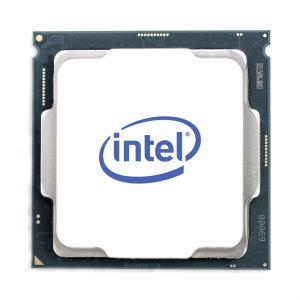Cart
- Cart Empty!
- Appliances
- Books
- Software Esd
- Audio/ Video/ Multimedia
- Cables & Accessories
- Communication & Networking
- Controller & Interface
- Imaging & Photography
- Input Devices
- Monitor & Display
- Motherboard/ Memory/ Processor
- Notebook/ Tablet Pc/ E-book
- Pc & Workstation
- Power Components & Protection
- Printer/ Aio/ Copier/ Fax
- Projectors
- Servers
- Software
- Storage
- Telephony/ Handhelds
Every effort has been made to ensure the accuracy of all information contained herein. e-nitiative shall not be liable for any changes resulting in wrong product description, tax code and/or price. The shown information (specifications, prices, taxes) should be considered as an indication and can be changed at any moment and without any prior notice.
Rue Van Eyck, 22
Bruxelles
B-1000
Belgium




Product Details
Introduction
Intel® Turbo Boost Technology
Intel® Turbo Boost Technology dynamically increases the processor's frequency as needed by taking advantage of thermal and power headroom to give you a burst of speed when you need it, and increased energy efficiency when you don't.
Intel® vProT Platform Eligibility
Intel® vProT Technology is a set of security and manageability capabilities built into the processor aimed at addressing four critical areas of IT security: 1) Threat management, including protection from rootkits, viruses, and malware 2) Identity and web site access point protection 3) Confidential personal and business data protection 4) Remote and local monitoring, remediation, and repair of PCs and workstations.
Intel® Hyper-Threading Technology
Intel® Hyper-Threading Technology (Intel® HT Technology) delivers two processing threads per physical core. Highly threaded applications can get more work done in parallel, completing tasks sooner.
Intel® Virtualization Technology (VT-x)
Intel® Virtualization Technology (VT-x) allows one hardware platform to function as multiple "virtual" platforms. It offers improved manageability by limiting downtime and maintaining productivity by isolating computing activities into separate partitions.
Intel® Virtualization Technology for Directed I/O (VT-d)
Intel® Virtualization Technology for Directed I/O (VT-d) continues from the existing support for IA-32 (VT-x) and Itanium® processor (VT-i) virtualization adding new support for I/O-device virtualization. Intel VT-d can help end users improve security and reliability of the systems and also improve performance of I/O devices in virtualized environments.
Intel® VT-x with Extended Page Tables (EPT)
Intel® VT-x with Extended Page Tables (EPT), also known as Second Level Address Translation (SLAT), provides acceleration for memory intensive virtualized applications. Extended Page Tables in Intel® Virtualization Technology platforms reduces the memory and power overhead costs and increases battery life through hardware optimization of page table management.
Intel® TSX-NI
Intel® Transactional Synchronization Extensions New Instructions (Intel® TSX-NI) are a set of instructions focused on multi-threaded performance scaling. This technology helps make parallel operations more efficient via improved control of locks in software.
Intel® 64
Intel® 64 architecture delivers 64-bit computing on server, workstation, desktop and mobile platforms when combined with supporting software.ą Intel 64 architecture improves performance by allowing systems to address more than 4 GB of both virtual and physical memory.
Instruction Set
An instruction set refers to the basic set of commands and instructions that a microprocessor understands and can carry out. The value shown represents which Intel's instruction set this processor is compatible with.
Instruction Set Extensions
Instruction Set Extensions are additional instructions which can increase performance when the same operations are performed on multiple data objects. These can include SSE (Streaming SIMD Extensions) and AVX (Advanced Vector Extensions).
# of AVX-512 FMA Units
Intel® Advanced Vector Extensions 512 (AVX-512), new instruction set extensions, delivering ultra-wide (512-bit) vector operations capabilities, with up to 2 FMAs (Fused Multiply Add instructions), to accelerate performance for your most demanding computational tasks.
Enhanced Intel SpeedStep® Technology
Enhanced Intel SpeedStep® Technology is an advanced means of enabling high performance while meeting the power-conservation needs of mobile systems. Conventional Intel SpeedStep® Technology switches both voltage and frequency in tandem between high and low levels in response to processor load. Enhanced Intel SpeedStep® Technology builds upon that architecture using design strategies such as Separation between Voltage and Frequency Changes, and Clock Partitioning and Recovery.
Intel® Speed Shift Technology
Intel® Speed Shift Technology uses hardware-controlled P-states to deliver dramatically quicker responsiveness with single-threaded, transient (short duration) workloads, such as web browsing, by allowing the processor to more quickly select its best operating frequency and voltage for optimal performance and power efficiency.
Intel® Deep Learning Boost (Intel® DL Boost)
A new set of embedded processor technologies designed to accelerate AI deep learning use cases. It extends Intel AVX-512 with a new Vector Neural Network Instruction (VNNI) that significantly increases deep learning inference performance over previous generations.
Intel® Resource Director Technology (Intel® RDT)
Intel® RDT brings new levels of visibility and control over how shared resources such as last-level cache (LLC) and memory bandwidth are used by applications, virtual machines (VMs) and containers.
Intel® Volume Management Device (VMD)
Intel® Volume Management Device (VMD) provides a common, robust method of hot plug and LED management for NVMe-based solid state drives.
Processor
Processor manufacturer
Intel
Processor generation
2nd Generation Intel® Xeon® Scalable
Processor model
4214
Processor base frequency
2.2 GHz
Processor family
Intel Xeon Silver
Processor cores
12
Processor socket
LGA 3647 (Socket P)
Component for
Server/workstation
Processor lithography
14 nm
Processor threads
24
Processor operating modes
64-bit
Processor boost frequency
3.2 GHz
Processor cache
16.5 MB
Thermal Design Power (TDP)
85 W
Box
N
Cooler included
N
Processor codename
Cascade Lake
Processor ARK ID
193385
Memory
Maximum internal memory supported by processor
1024 GB
Memory types supported by processor
DDR4-SDRAM
Memory clock speeds supported by processor
2400 MHz
Memory channels
Hexa-channel
ECC
Y
Graphics
On-board graphics card
N
Discrete graphics card
N
On-board graphics card model
Not available
Discrete graphics card model
Not available
Features
Execute Disable Bit
Y
Market segment
Server
Maximum number of PCI Express lanes
48
PCI Express slots version
3.0
Supported instruction sets
SSE4.2,AVX,AVX 2.0,AVX-512
Scalability
2S
Embedded options available
Y
PCI Express CEM revision
3.0
Harmonized System (HS) code
8542310001
Export Control Classification Number (ECCN)
5A992C
Commodity Classification Automated Tracking System (CCATS)
G077159
Processor special features
Intel® Hyper Threading Technology (Intel® HT Technology)
Y
Intel® Turbo Boost Technology
2.0
Intel® AES New Instructions (Intel® AES-NI)
Y
Enhanced Intel SpeedStep Technology
Y
Intel Trusted Execution Technology
Y
Intel® Speed Shift Technology
Y
Intel® Transactional Synchronization Extensions
Y
Intel VT-x with Extended Page Tables (EPT)
Y
Intel TSX-NI
Y
Intel 64
Y
Intel Virtualization Technology (VT-x)
Y
Intel Virtualization Technology for Directed I/O (VT-d)
Y
Intel Turbo Boost Max Technology 3.0
N
AVX-512 Fused Multiply-Add (FMA) units
1
Intel® Deep Learning Boost (Intel® DL Boost)
Y
Intel® Speed Select technology - Performance Profile (Intel® SST-PP)
N
Intel® Resource Director Technology (Intel® RDT)
Y
Intel® Volume Management Device (VMD)
Y
Intel® Run Sure Technology
N
Mode-based Execute Control (MBE)
Y
Intel® Optane™ DC Persistent Memory Supported
N
Intel® vPro™ Platform Eligibility
Y
Intel Speed Select Technology (SST)
N
Intel® Speed Select Technology - Base Frequency (Intel® SST-BF)
N
Intel® Optane™ DC Persistent Memory technology
N
Operational conditions
Tcase
77 °C
Technical details
Launch date
Q2'19
Product type
Processor
Status
Launched
Supported memory types
DDR4-SDRAM
Memory speed (max)
2400 MHz
Number of UPI links
2
Packaging data
Package width
43 mm
Package depth
137 mm
Package height
112 mm
Package weight
201 g
Package type
Retail box
Weight & dimensions
Processor package size
76mm x 56.5mm
Other features
Maximum internal memory
1000 GB


















